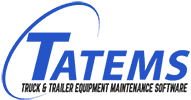Managing fuel costs isn’t just watching pump prices. It’s as much steering drivers to preferred fuel suppliers and considering off route distances and fuel grades as it is using the latest tech and finding eco-friendly solutions.
Fleet owners and drivers have to keep an eye on costs and fuel consumption. Not doing so threatens the bottom line. Here are factors that can benefit fleet fuel management.
Fuel Types & Their Differences
Finding the best fuel type remains a priority.
Propane Autogas
Less than 3% of propane autogas is manufactured internationally. This solution's local production promises better price per gallon stability. Its production is also an eco-friendly solution.
Renewable Diesel
Though renewable diesel has a heftier per gallon price, it improves vehicle performance. There are fewer maintenance and repair costs. This is because the oil’s production leaves almost no impurities that harm an engine.
Keeping Sound Recording of Fuel Costs
If fueling on-site, you have to stay on point with consumption. It’s highly recommended fleets utilize inventory control systems. You want to compare fueling records with retail fuel purchase to manage overlaps.
Depending on consumption, this can be a big job. The latest technology alleviates the process. Management can see real-time data and receive alerts for irregularities.
Auto or Manual Transmission
Advancements in technology flips the idea manual trannys are better at fuel economy. Automatic solutions are extremely sophisticated. With their algorithms, you get an optimized mesh of performance and fuel economy.
With auto options, there is a learning curve for getting peak performance for a fleet. Settings may need customizing for specific engines. It's worth the effort as adjustments can save on mpg and maximize torque.
Gamification Apps
A gamification app tracks productivity. It prompts agenda plans and goals. You can use one to track fuel costs vs. budgeting. It highlights savings and makes reaching financial goals more attainable.
With a gamification app, you’ll have daily fuel management scorecards for drivers. They’ll see how hard braking and speeding impacts fuel economy. Drivers will know how to self-correct driving behaviors.
Tracking Fleet Cards
Tracking purchases via company cards gets complicated. Fleets may contain different types of vehicles and use various cards. Work with a company that accommodates single card use but also manages light, medium and heavy trucks. This lets you track fuel use without managing multiple data sources.
Not all fleets need this design. Each company requires specific needs and not necessarily blanket coverage. The manager of your fuel supply needs a firm understanding of your needs, the market and how to address issues concerning your business.
CO2 Emission Tracking
Reducing your footprint helps the bottom line. Managing guidelines for controlling greenhouse gas emissions may earn tax benefits. Adjustments can lead to better fuel efficiency. And comparing vehicle performance shows which trucks can perform better.
Your due diligence is critical to fleet fuel management. Driver behavior, upgrading tech and equipment and more are great opportunities to design streamlined fuel consumption. These all play a role in fuel use, costs and profit margins.
Sources:
https://www.worktruckonline.com/322139/8-fuel-management-trends-to-follow
https://www.worktruckonline.com/157166/effectively-managing-fuel-in-truck-fleets
https://clevertap.com
https://www.gofleet.com




